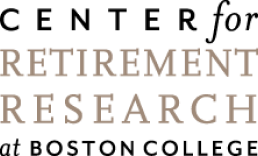Filter


Gen-X Retiree Income Inequality to Widen
There’s a growing awareness of the chasm between average working Americans and those at the top of the earnings scale. What isn’t widely recognized is that this broad economic trend is spilling over into retirement incomes, which depend on how much people earn and save while they’re still working. “The increasing wage inequality we see during the working years plays out over the life course and will result in more unequal incomes at older ages,” said Richard Johnson, an economist with the Urban Institute in Washington. Johnson recently compared the incomes of today’s retirees with his income projections for the youngest members of Generation X who will enter retirement in about 30 years. He found that the imbalance between thos…
January 28, 2014
When Your Health, Job Demands Clash
Home health aides, nurses, teacher assistants and servers do a lot of lifting or standing for long periods, which takes a toll on their bodies. For a middle-aged waitress, it might be a bad knee. For a baby boomer caring for an elderly person, it might be the strain of lifting a patient out of a chair. In a new study, researchers calculated the percentage of workers who cite health-related obstacles to performing their jobs for nearly 200 occupations. A ranking of these percentages proved a fairly reliable indicator of what one would expect workers to do. Workers in the occupations with the largest share of people having difficulty performing their jobs were more likely to quit work and f…
July 2, 2019
Temporary Disability Insurance Prevents Some Early Retirements
Congress has, for decades, tossed around various proposals for a permanent national paid leave program that would give workers time off for an illness or to care for a sick family member. The idea gained traction during COVID when so many Americans became ill. But none of the proposals have passed amid disagreement over the impact of paid-leave policies. Proponents at the state and federal levels argue that compensating injured or sick workers who take time off allows them to recuperate and eventually get back to work. But others worry that paid leave provides just enough income to pay the bills so workers have time to apply for federal disability and drop out of the labor force permanently. So what…
June 18, 2024
2.8 Million Seniors Have College Debt
The number of Americans over age 60 who are paying back federal or private student loans has reached a critical mass, quadrupling to 2.8 million over the past decade, a new report finds. These older borrowers owe $23,500, on average, and two-thirds of them also have mortgages and credit card bills at a time their medical expenses are typically increasing, according to the report issued this month by the Consumer Financial Protection Bureau (CFPB). Separately, nearly 40 percent of those with federal loans have defaulted on their payments. The response of many older student loan borrowers, the CFPB said, is to “skip necessary health care needs such as prescription medicines, doctor’s visits, and dental care because they could not afford…
January 17, 2017
Medicaid to Help Fill Gap in Seniors’ Care
Two previous studies on long-term care reported in this blog estimated how many of today’s 65-year-olds today will require care for minimal, moderate, or severe levels of need as they age and how many have the financial resources to cover each level of care that might be required. In the third and final study in this series, the Center for Retirement Research matched the specific levels of need each retiree is projected to have in the future with their resources to determine how many of them will fall short. Among all retirees, 22 percent are expected to have minimal needs for care and 9 percent will lack the family and financial resources to cover it – in other words, just…
December 16, 2021
Work’s Getting Easier for Most Older Workers
Technology has had a profound impact on how we work. Changes in what employers expect from an aging workforce reflect that evolution – and the changes have largely been positive. Americans in their late 50s and early 60s increasingly are holding jobs that require them to be highly trained or college educated to take on the cognitive tasks the positions require. Occupations such as sales, production, laborer, and repair have given way to technical and professional employment, according to the Urban Institute’s in-depth analysis of U.S. occupational data. But while the mix of jobs in the economy has clearly changed, the more significant change underway has occurred within specific occupations, the researchers said. Older workers find that all kinds of…
April 13, 2023
Modifying a Retirement Plan is Tricky
Employers beware: changing your retirement plan’s design can have unfortunate, unintended consequences for your employees. That’s what happened to the Thrift Savings Plan (TSP) for federal workers, says a new study by a team of researchers for the NBER Retirement and Disability Research Center. Like many private-sector savings plans, the $500 billion TSP – one of the nation’s largest retirement plans – has automatic enrollment. Federal employees can make their own decision about how much they want to save and, in a separate decision, how to invest their money. But if they don’t do anything, their employer will automatically do it for them. In 2015, the TSP changed its automatic, or default, investment from a government securities fund to a…
August 20, 2019
How Can We Better Support Family Caregivers? Pay Them
While the cost of elder care in the United States, whether paid for by Medicare, Medicaid or out-of-pocket, is substantial, most care is provided by family members for no compensation. Yet the burden on those family members can also be huge in terms of forgoing paid employment or work opportunities, time with family and friends, and general exhaustion. An issue brief recently published by the Center for Retirement Research at Boston College examines these costs, policies that can support family caregivers, and their preferences as expressed in focus groups. Here are some of its findings: In 2021, there were about 38 million family caregivers in the United States who are estimated to have provided 36 billion hours of assistance to their family…
March 27, 2025
Medicaid Expansion Eased Financial Strain During COVID
In the crucible of COVID, the Medicaid expansion that was part of the Affordable Care Act made a difference to older Americans, who were more vulnerable to becoming seriously ill or hospitalized from the virus. In the states that chose to expand the low- or no-cost Medicaid health insurance program to more of their low-income residents, researchers at the University of Wisconsin found that people between the ages of 45 and 64 were better off financially than similar people in the non-expansion states. “The COVID-19 pandemic highlights the importance of the safety net,” the researchers said, “in improving the economic security of households.” By expanding Medicaid, many states made it easier for individuals to qualify by increasing the income limit…
July 9, 2024
Women Get Less from Workers’ Comp
Women receive less medical care for their health problems than men with the same conditions, research shows. And doctors are more likely to tell women their symptoms are emotional rather than physical. Differential treatment for men and women also exists in another corner of the healthcare system: workers’ compensation claims. Women injured on the job who are evaluated by female doctors are more likely to be determined to have an injury that qualifies them for workers’ comp benefits than when the doctors are men, according to Marika Cabral at the University of Texas at Austin and Marcus Dillender at Vanderbilt University. Among the women whose injuries are under review, the evaluations performed by female doctors result in 9 percent mor…
September 6, 2022
The 100-Year Life: Is It Real?
If not, even an 80- to 90-year life needs rethinking. This post was written by Harry Margolis, a new contributor to the Squared Away Blog. In their book, The 100-Year Life: Living and Working in an Age of Longevity (published in 2016), the psychologist Lynda Gratton and economist Andrew J. Scott predict that living a century will soon become the norm and discuss the implications of a longer lifespan on work, retirement, family life, and society. Gratton and Scott tell us that with longer lifespans we need to abandon the concept of a three-stage life – youth and education, middle-age and working, and old-age and retirement. Instead, they say, we and our institutions need to become more flexible, allowing us to move in and out…
November 19, 2024
Widows Face More Financial Adversity
Two times more widows than widowers say their spouse’s death carried significant negative financial consequences during the first year after their loss. This sharp contrast recurred in numerous financial questions recently posed to widows and widowers by New York Life. The contrast also seemed to persist across various income levels, in questions revolving around both essential needs and luxuries. Here’s a sampling of answers given by nearly 900 Americans whose spouses have died sometime in the past decade: Their answers beg the question: Why the divergence? One reason is certainly that two-thirds of the widows surveyed reported their income was under $35,000, while a majority of the widowers earned more than that. Adults over age 18 were canvassed, so working…















